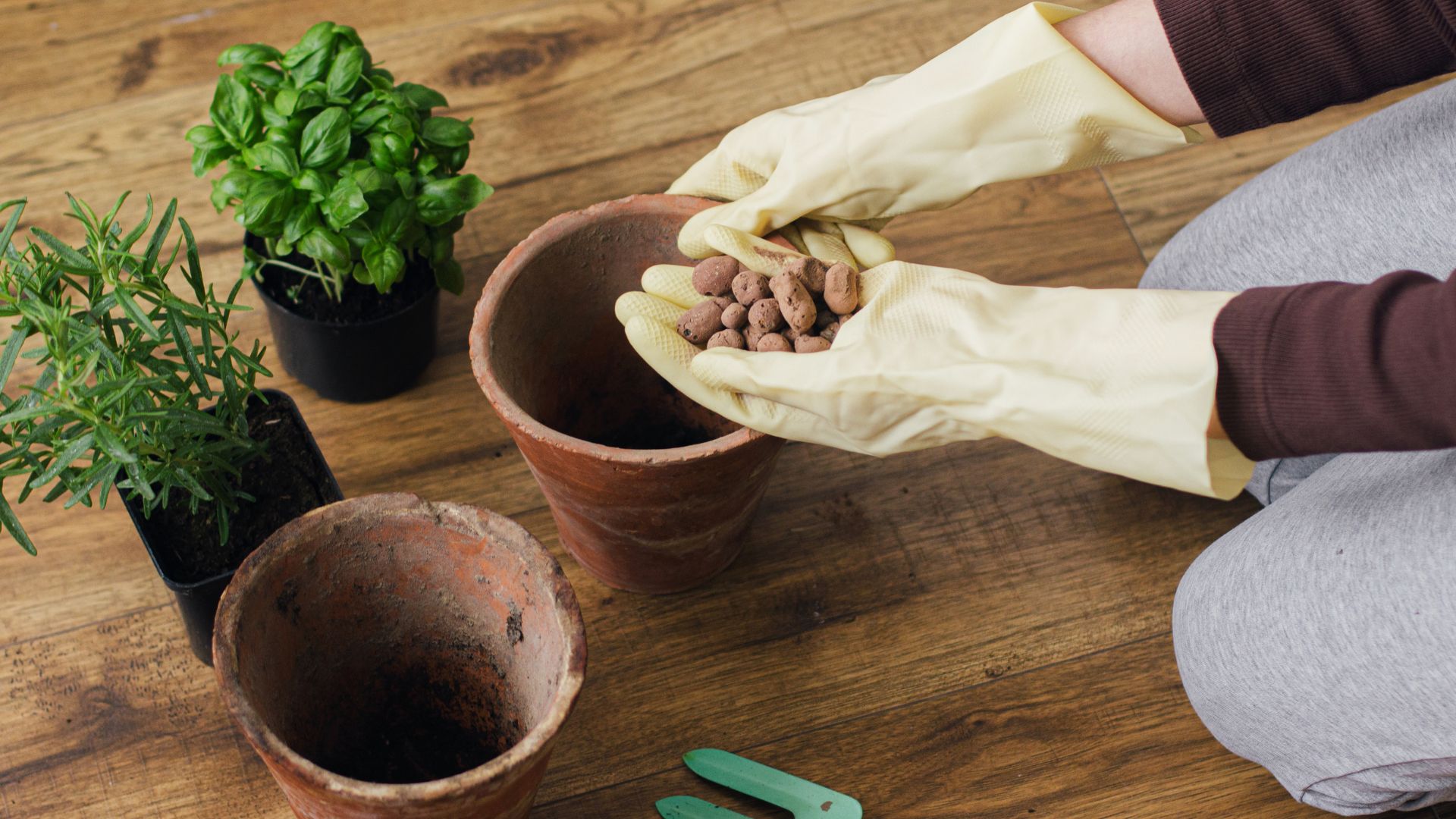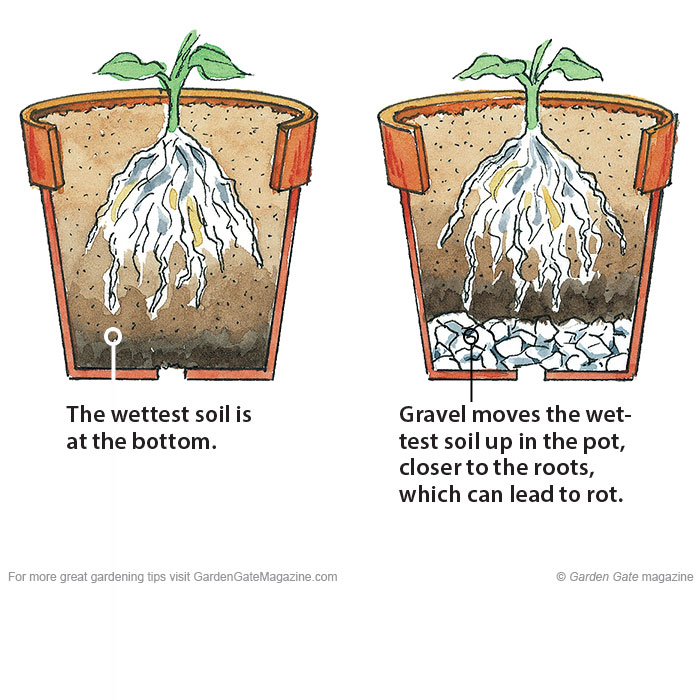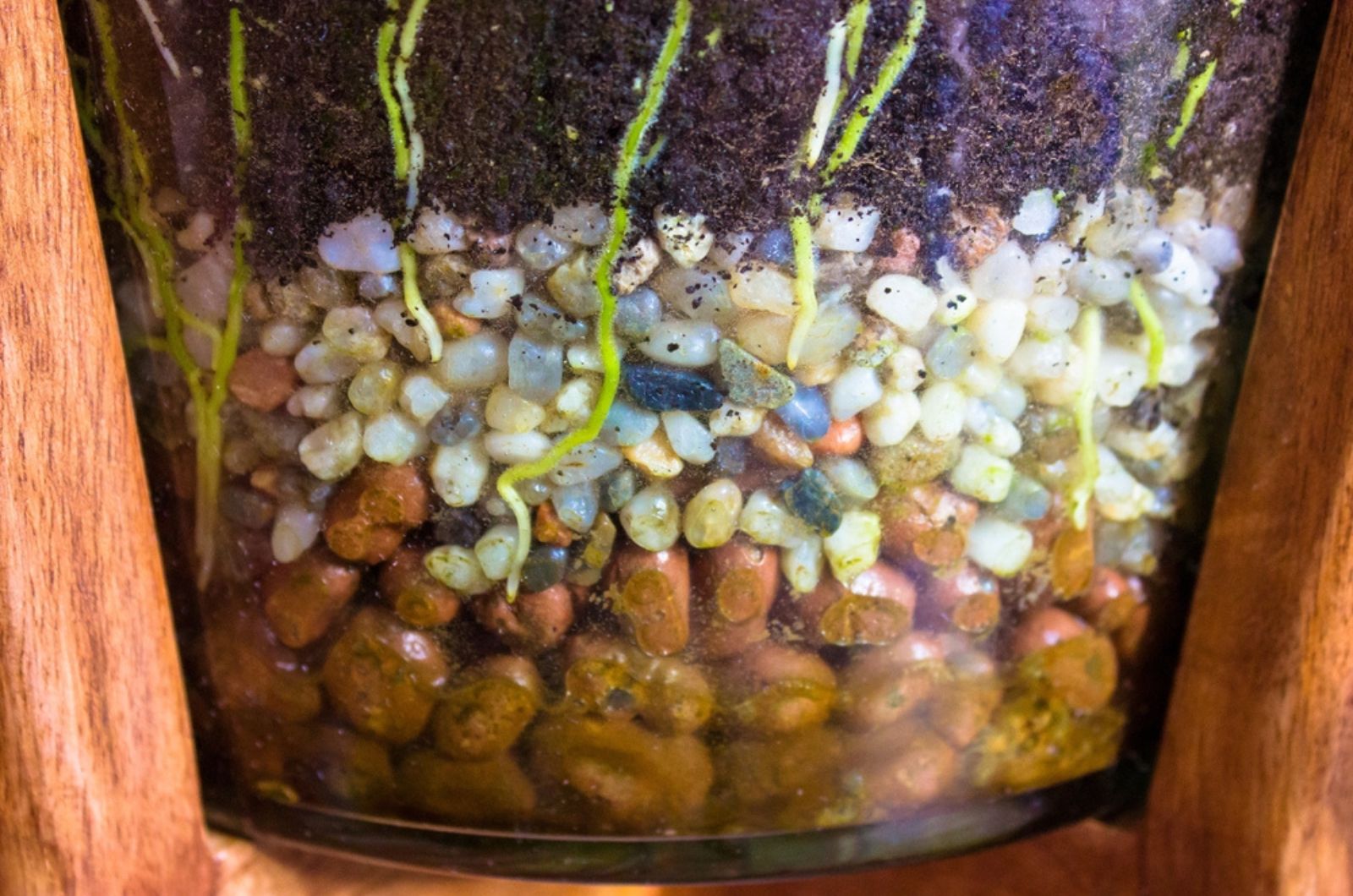If you have potted plants, then you know how important drainage is. Without it, our plants would rot in no time!
Many gardeners have been promoting various techniques of improving drainage, including adding rocks to the bottom of planters.
However, they are moving away from this technique because it has more drawbacks than benefits. It can even create a tiny pool within your planters and keep your plants’ roots wet.
Let’s explore some other disadvantages of this method and discover better ways to improve drainage!
Downfalls Of Rocks In Planters
Adding rocks and gravel to the bottom of planters seems like an excellent idea, but in reality it is anything but that. This method should act as a draining layer between the potting soil and the drainage hole, allowing the water to drain more quickly.
However, it actually creates a perched water table – a phenomenon where an impermeable water layer forms at the bottom of the container, causing the water to collect above the drainage level even though there is a hole in the bottom.
In addition to this, the gravel or rock layer at the bottom reduces the volume of the growing medium, pushing that perched water table even higher up. It restricts air circulation in the growing substrate as well.
And if we combine constant wetness with low airflow, the results can be devastating, including fungal infections such as root rot and overall plant demise.
Also, less soil in the pot equals less room for the plant’s roots to spread out. This stresses them out, reduces the plants’ drought-tolerance (because of shallow roots), and diminishes overall plant health.
Finally, rocks can also affect the soil pH levels, but it depends on the type you use. For instance, if you added limestone, it will make it more alkaline, but there are more inert ones (gravel, quartz, etc.) that don’t affect pH values.
Better Ways To Improve Drainage
So, what can we use if we can’t add rocks and gravel to the bottom of containers?
Well, the easiest way is to improve the drainage of the potting medium by adding materials that make it more porous. Discover the differences between perlite and pumice and add one of them (or both in smaller quantities).
You can also include organic matter, such as compost, leaf mold, coco coir, etc. These materials improve both drainage and proper moisture retention, both of which are necessary for proper plant growth and water and nutrient uptake.
Also, don’t forget to repot your plants, especially when they’re young and grow vigorously. Move them to a larger container every 1-2 years or once you see their roots coming out of drainage holes.
And if you’ve already gathered some rocks and don’t feel like taking them back into your backyard, you can always use them as a mulch for potted plants.
They will increase moisture retention a bit, hide the dirt, and make your plant aesthetically pleasing, as well as prevent your pets from digging them up.



